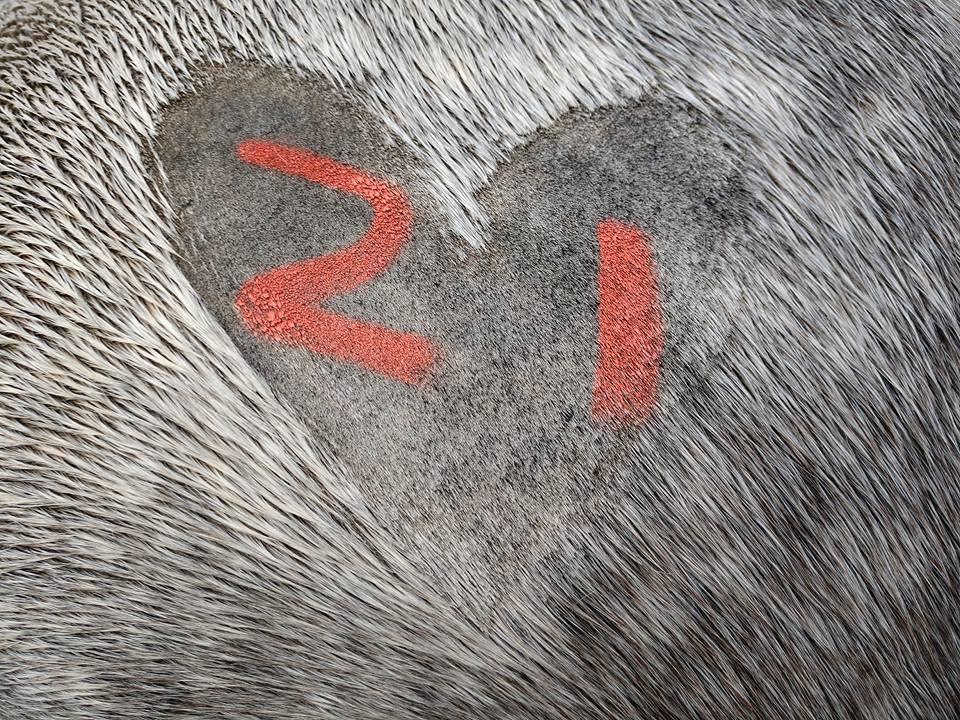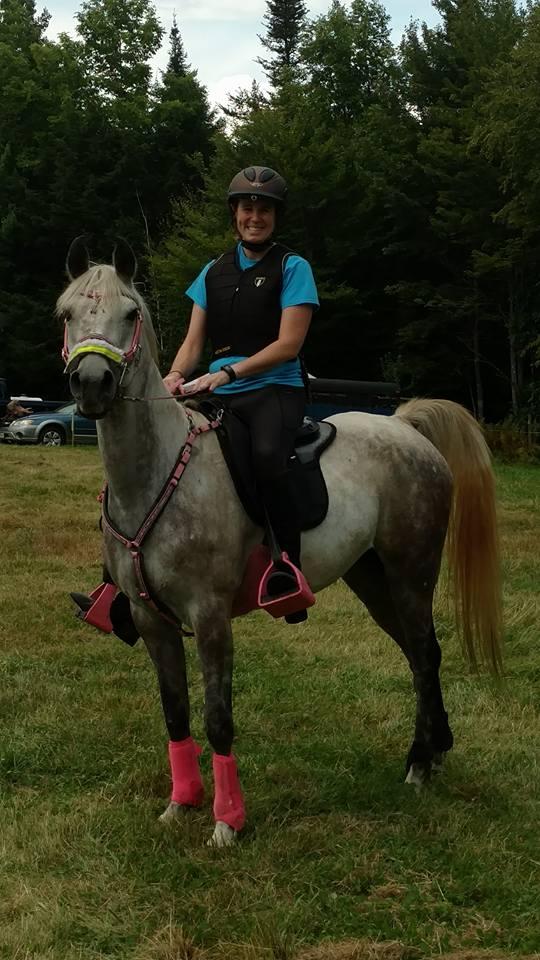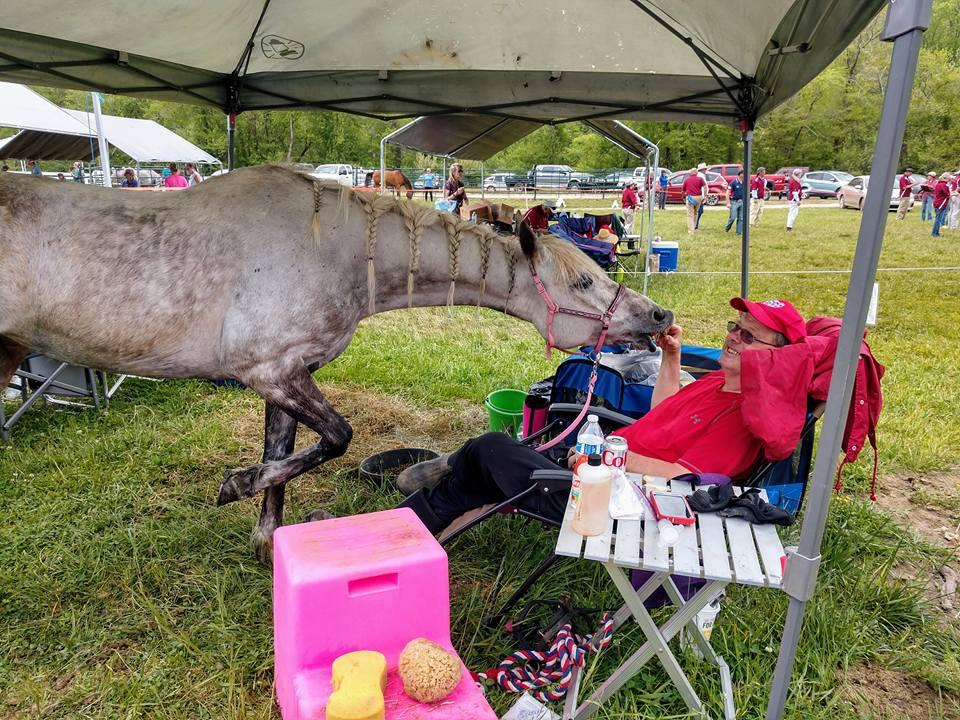
Going the Distance: The Anatomy of an Endurance Ride
From setting up camp to the hold box and the finish, an endurance race is like no other equestrian event. In the latest installment of “Going the Distance,” we break down the anatomy of an endurance ride!
This year at Horse Nation we are following the amazing endurance rider Angela Gross Kemerer and her adorable Arabian mare Shae as they prepare to compete in the infamous Vermont 100 ride. So far we have covered how to properly condition your horse and yourself for a 100 mile endurance ride, as well as some of the gear you might need at the race. Today we’re going cover what happens on the day of the big ride and see how all those hours of training and careful preparation can pay off.
The Day Before the Race
The day before the ride, competitors arrive at race venue and set up camp. Riders are required to provide their own accommodations for their equine athletes and many will high line their horses (a method used to safely tie horses overnight), or use some sort of potable corral. Angela keeps Shae safe and secure with portable hotwire fencing.
After the horses have their temporary abodes in place, the riders can set up their own bed for the night. While some may stick to traditional tent camping, others have access to horse trailers with living quarters.
Once accommodations are in place for both horse and rider, competitors check in with the event secretary to get their ride cards and ride materials. After checking in, Angela likes to tack Shae for a short hack — nothing strenuous, but enough to stretch her legs and familiarize her with the area.
After returning to camp, Shae will receive a complete veterinary exam to ensure she is fit for the ride. The exams include checking for signs of dehydration, listening for healthy gut sounds, checking for a steady, even heartbeat, as well as recording the resting rate, muscle tone evaluation, and overall body score evaluation. In addition to the physical exam, horses are required to perform a trot-up to confirm general soundness.
Once Shae has been cleared by the vets, Angela will set up her crew –the area where Shae will stay during holds and upon finishing. The crew area consists of a tent for shade, food for horse and rider, ice, water, sponges, a saddle rack, some chairs and a heart rate monitor. At some rides, the Vermont 100 being one, all of the hold boxes are away from camp requiring a crew member to take items to each hold area as the ride progresses. Angela is lucky to have her husband, an experienced endurance rider himself, who frequently fills this role. (We’ll go over what what happens in the hold boxes in a bit more depth when we get to race day.)
Lastly, riders attend a briefing informing them of course details, and information about the vetting process in each of the hold boxes. After the briefing, riders will turn in for the night to rest up for the long day that lies ahead!
Race Day!
You have to wake up EARLY to ride 100 miles. Start time is 5 am and Angela needs to get up early enough to get Shae ready and give her some electrolytes. Fifteen minutes before start time, Angela will check in with the ride organizers and get Shae warmed up at the walk and trot. Then she waits for the **ba ba ba ba** final countdown (said with my best Gob Bluth magician hands) after which she’ll get the go ahead to set out on course!
Rides are broken up into a number of loops generally between 5 and 25 miles long. At the completion of each loop there is a hold point. At each hold horses are examined in a similar fashion to the initial vet-in to confirm that they are fit to continue. Before vetting in, however, a horses heart rate must drop to a pre-determined point established during the initial vet-in. Holds last the same amount of time for all competitors, typically around 45-50 minutes, before being allowed to set out on course once again.
Upon completion of the ride there is a final vet-in and riders receive their placings. Horse and rider combinations are placed by the order they cross the finish line, because this is a race after all! The top ten placings are coveted positions, but let’s be real, if you can complete a 100 mile ride with both horse and rider in good condition, you’re a champion regardless of the color ribbon you bring home.
In addition to race placings, there are two awards that evaluate your conditioning program and race preparation. The first is the high vet score award which goes to the horse with the highest vet score over the course of the ride. The second is the best condition award which goes to the horse with the best vet score and best time/tack weight carried. We riders take pride in the level of care we provide for our horses and the measures we take to ensure their welfare during competition, so many consider winning one of these two awards as good as a first place finish. Angela and Shae got both of these awards at one their races earlier this year, a clear sign that they have prepared well and ready to take on their upcoming Vermont 100 ride!

An example of the vet card used to score a horse’s condition. Photo courtesy of Angela Gross Kemerer.
Look for us next time when we hear how Angela and Shae fared in their latest race.
Go Angela and Shae!
and
Go riding!










Leave a Comment